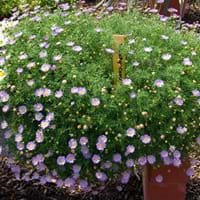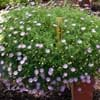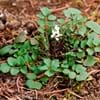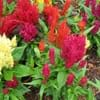Life Span
Annual
Perennial
Type
Tender Perennial
Tree
Origin
Hybrid origin, Australia, New Zealand
Africa, South-Eastern Asia
Types
Not Available
Not Available
Habitat
Dry areas, Islands, Semi arid regions, Tropical regions
Subtropical forests, Tropical regions
USDA Hardiness Zone
10-12
5-9
Sunset Zone
H1, 14, 15, 16, 17, 18, 19, 20, 21, 22, 23, 24
1a, 1b, 2a, 2b, 3a, 3b, 7, 8, 9, 10, 11, 14, 18, 19, 20, 21
Habit
Cushion/Mound-forming
Clump-Forming
Flower Color
White
Pale Yellow, Yellow green
Flower Color Modifier
Bicolor
Bicolor
Fruit Color
Not Available
Green, Light Green
Leaf Color in Spring
Green
Green
Leaf Color in Summer
Green
Light Green
Leaf Color in Fall
Green
Green, Light Green
Leaf Color in Winter
Light Green
Brown, Light Yellow, Tan
Leaf Shape
Club - shaped
Oval
Plant Season
Spring, Summer, Fall, Winter
Summer, Fall, Winter
Sunlight
Full Sun, Partial Sun
Full Sun
Type of Soil
Loam, Sand
Clay, Loam, Sand
The pH of Soil
Acidic
Acidic, Neutral, Alkaline
Soil Drainage
Well drained
Average
Bloom Time
Indeterminate
Summer, Late Summer, Early Fall
Tolerances
Drought
Pollution, Drought, Salt
Where to Plant?
Container, Ground, Pot
Ground
How to Plant?
Seedlings
Seedlings, Stem Cutting
Plant Maintenance
Medium
Medium
Watering Requirements
Average Water Needs
Needs less watering
In Summer
Lots of watering
Lots of watering
In Spring
Moderate
Moderate
In Winter
Average Water
Average Water
Soil pH
Acidic
Acidic, Neutral, Alkaline
Soil Type
Loam, Sand
Clay, Loam, Sand
Soil Drainage Capacity
Well drained
Average
Sun Exposure
Full Sun, Partial Sun
Full Sun
Pruning
Remove damaged leaves, Remove dead branches, Remove dead leaves
A hard prune may be necessary if the plant becomes woody, Cut upper 1/3 section when young to enhancegrowth, Remove damaged leaves, Remove dead branches, Remove dead leaves
Fertilizers
All-Purpose Liquid Fertilizer
10-10-10 diluted liquid fertilizer, All-Purpose Liquid Fertilizer, Compost
Pests and Diseases
Slugs, Snails
Aphids, Downy mildew, Purple Blotch, Red blotch
Plant Tolerance
Drought
Drought, Salt and Soil Compaction, Shade areas
Flower Petal Number
Single
Single
Foliage Texture
Fine
Fine
Foliage Sheen
Glossy
Glossy
Attracts
Not Available
Bees, Flies, pollinators
Allergy
Not Available
conjunctivitis, sneezing
Aesthetic Uses
Beautification, Hanging Basket, Showy Purposes
Not Used For Aesthetic Purpose
Beauty Benefits
Not Available
Making cosmetics, Not Available
Environmental Uses
Air purification
Air purification, Shadow Tree, Soil protection
Medicinal Uses
No Medicinal Use
Cardiovascular problems, Detoxifies lever, Diabetes, Dysentry, Jaundice, Menstrual Disorders
Part of Plant Used
Flowers, Leaves
Inner Bark, Leaf Stalks
Other Uses
Used as Ornamental plant
Can be made into a herbal tea, Oil is used for aromatherapy, Used as a fodder tree in agricultural areas
Used As Indoor Plant
No
No
Used As Outdoor Plant
Yes
Yes
Garden Design
Bedding Plant, Container, Edging, Hanging Basket, Mixed Border, Rock Garden / Wall
Dried Flower/Everlasting, Lawns and Turf, Mixed Border, Wildflower
Botanical Name
BRACHYSCOME iberidifolia
Terminalia arjuna
Common Name
Brachycome iberidifolia, Swan River Daisy
Arjuna
In Hindi
swan river daisy
अर्जुन वृक्ष
In German
Swan River Gänseblümchen
Terminalia arjuna
In French
Swan River daisy
Terminalia arjuna
In Spanish
Río Swan margarita
Migdałecznik arjuna
In Greek
Swan River μαργαρίτα
arjuna
In Portuguese
daisy Swan River
Migdałecznik arjuna
In Polish
Swan River stokrotka
Migdałecznik arjuna
In Latin
Swan flumen primula
arjuna
Phylum
Tracheophyta
Magnoliophyta
Class
Magnoliopsida
Not Available
Family
Asteraceae
Poaceae
Genus
Brachyscome
Terminilia
Clade
Angiosperms, Asterids, Eudicots
Angiosperms, Eudicots, Rosids
Tribe
Astereae
Not Available
Subfamily
Asteroideae
Not Available
Season and Care of Swan River Daisy and Arjuna Tree
Season and care of Swan River Daisy and Arjuna Tree is important to know. While considering everything about Swan River Daisy and Arjuna Tree Care, growing season is an essential factor. Swan River Daisy season is Spring, Summer, Fall and Winter and Arjuna Tree season is Spring, Summer, Fall and Winter. The type of soil for Swan River Daisy is Loam, Sand and for Arjuna Tree is Clay, Loam, Sand while the PH of soil for Swan River Daisy is Acidic and for Arjuna Tree is Acidic, Neutral, Alkaline.
Swan River Daisy and Arjuna Tree Physical Information
Swan River Daisy and Arjuna Tree physical information is very important for comparison. Swan River Daisy height is 20.30 cm and width 30.50 cm whereas Arjuna Tree height is 300.00 cm and width 45.70 cm. The color specification of Swan River Daisy and Arjuna Tree are as follows:
Swan River Daisy flower color: White
Swan River Daisy leaf color: Green
Arjuna Tree flower color: Pale Yellow and Yellow green
- Arjuna Tree leaf color: Green
Care of Swan River Daisy and Arjuna Tree
Care of Swan River Daisy and Arjuna Tree include pruning, fertilizers, watering etc. Swan River Daisy pruning is done Remove damaged leaves, Remove dead branches and Remove dead leaves and Arjuna Tree pruning is done A hard prune may be necessary if the plant becomes woody, Cut upper 1/3 section when young to enhancegrowth, Remove damaged leaves, Remove dead branches and Remove dead leaves. In summer Swan River Daisy needs Lots of watering and in winter, it needs Average Water. Whereas, in summer Arjuna Tree needs Lots of watering and in winter, it needs Average Water.





